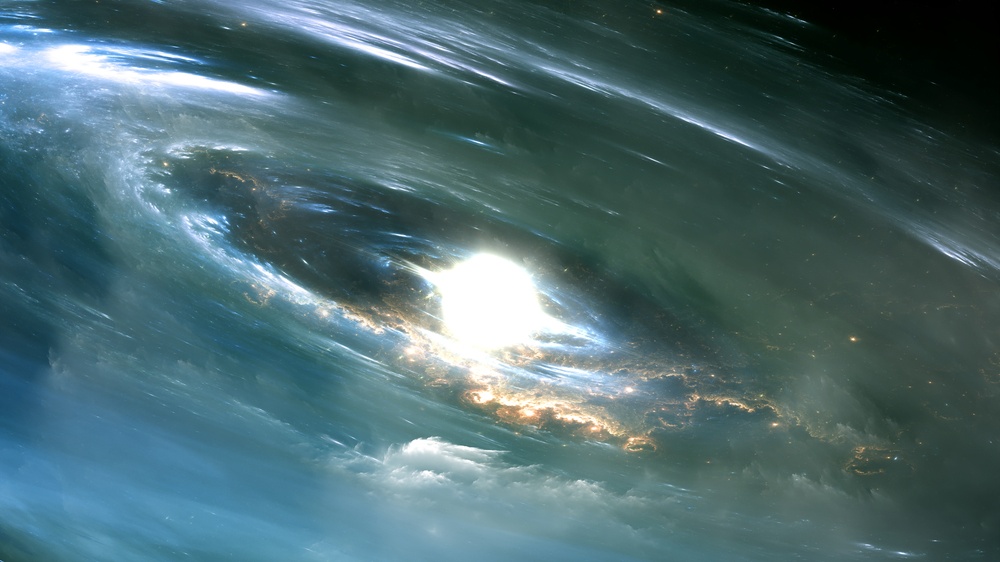Life as we know it may have its roots in an old, cold cosmic cloud
An amino acid has been produced in a lab by warming analogs of ices found in the freezing conditions of interstellar gas clouds.

Amino acids can form in the frigid conditions of interstellar molecular gas clouds, new laboratory experiments show, providing further evidence that the basic building blocks of life as we know it came from deep space.
By freezing carbon dioxide and ammonia to mimic interstellar ices that might typically be found in the cold molecular gas clouds that produce stars, then slowly warming those ices to 62 kelvin (–211 degrees Celsius, or –348 degrees Fahrenheit), scientists were able to create carbamic acid.
Carbamic acid is a simple amino acid. In biochemistry it can link to phosphate units to form molecules such as carbamoyl phosphate, which is important in the urea cycle and can also act as a precursor to various nucleobases and other amino acids, which are the building blocks of proteins.
The finding, led by scientists at the University of Hawaii at Manoa and the National Dong Hwa University in Taiwan, strengthens the theory that the building blocks of Earth-based life — amino acids, sugars, proteins, perhaps even more complex organic molecules — were formed in space before being delivered to Earth.
"There is the possibility that amino acids can form in cold molecular clouds and our laboratory experiments provide evidence," the University of Hawaii’s Ralf Kaiser, one of the senior authors of the new research, told Space.com. "We showed that carbon dioxide and ammonia can actually form carbamic acid just by warming up."
Related: How methane studies on Earth could inform the search for alien life in our solar system
Many amino acids have been detected in meteorites, while the Rosetta mission detected the amino acid glycine in comet 67P/Churyumov–Gerasimenko; amino acids were also found in the sample of material returned to Earth from the asteroid Ryugu by the Japanese Hayabusa2 mission.
Breaking space news, the latest updates on rocket launches, skywatching events and more!
Research presented in March 2023 found that asteroids like that one could have gained amino acids that formed from ionizing chemistry in the pre-solar nebula that eventually produced our sun. Previous experiments have also succeeded in producing amino acids from analogs of interstellar ices interacting with ionizing radiation from what are known as galactic cosmic rays.
However, the new results show for the first time that amino acids can form even without ionizing radiation, and also set lower limits for the temperature at which amino acids can form at all. The finding further suggests the basic building blocks of life formed before even the sun and planets had.
Alas, there has been no confirmed detection of amino acids in interstellar molecular clouds so far, and a claimed detection this summer of the amino acid tryptophan, which is one of the amino acids necessary to create proteins, in a molecular cloud a thousand light years away has since been discredited.
"The only place amino acids have been detected so far are in comets and in meteorites," said Kaiser.
The new findings, however, bolster the theory that amino acids should be present in star-forming regions, as far as calculations go. Crucially, Kaiser and his colleagues found that carbamic acid and ammonium carbamate, which was also produced in the experiment, can sublimate to form stable gases as the molecular cloud warms up from the energy of burgeoning young stars inside it.
"We went up to 290 kelvin (17 degrees Celsius, or 62 degrees Fahrenheit) and they survive in the gas phase, so they could be detected by radio telescopes," said Kaiser. These radio telescopes include ALMA, the Atacama Large Millimeter/submillimeter Array in Chile, which has been imaging protoplanetary discs. The detection of amino acids in such disks, which are busy forming asteroids and protoplanets, would further cement the theory that amino acids are born in molecular clouds that give birth to stars and planets, and then in their gas phase are accreted into planetary bodies.
For now, Kaiser says that the next steps are to synthesize the formation of other organic compounds in conditions mimicking interstellar clouds and star-forming regions.
"One possibility is to see if more complex bio-organic molecules can also be formed in laboratory experiments," he said. In one recent paper, Kaiser and his colleagues produced a chelating agent from a mixture of ammonia and acetaldehyde ices. A chelating agent bonds ions with "metal ions" such as magnesium, potassium and sodium. This is important in cellular biology for transporting ions through cell membranes, but usually fiendishly complex molecules are required to move these processes along — molecules scientists aren't sure can even form in space.
However, Kaiser says his experiment produced a more basic molecule and that "the prebiotic chelating agent formed from ammonia and acetaldehyde provides a very simple and versatile pathway, similar to carbamic acid, to form more complex systems in space."
As evolutionary biologists track back the evolution of biochemistry on Earth, and as astronomers push forward in understanding how increasingly complex organic molecules used by life are able to form in space, they'll continue getting closer to meeting in the middle and pinning down the origin of life on Earth and — and perhaps, beyond.
The findings were published on Nov. 29 in the journal ACS Central Science.

Keith Cooper is a freelance science journalist and editor in the United Kingdom, and has a degree in physics and astrophysics from the University of Manchester. He's the author of "The Contact Paradox: Challenging Our Assumptions in the Search for Extraterrestrial Intelligence" (Bloomsbury Sigma, 2020) and has written articles on astronomy, space, physics and astrobiology for a multitude of magazines and websites.

